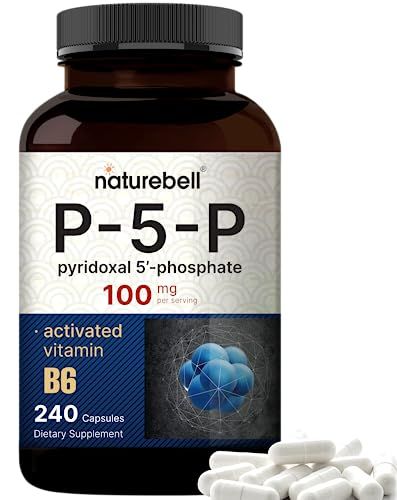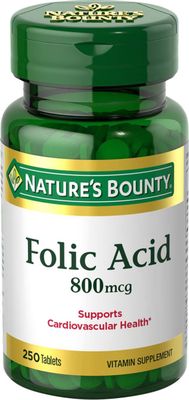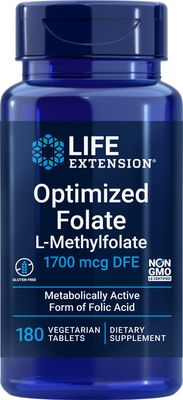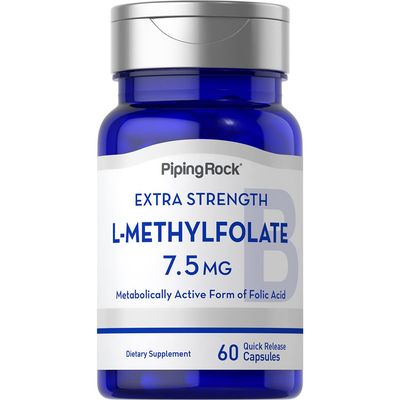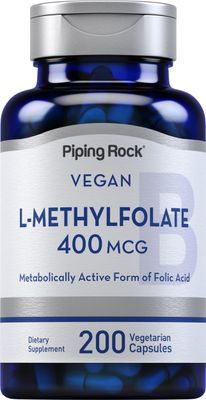NatureBell P5P Vitamin B6 100mg Per Serving, 240 Capsules | Activated Pyridoxal 5 Phosphate Supplements - Essential B Vitamins for Brain & Memory Health - Non-GMO
SKU: B07GCBWP2M
Subscribe & Save 2%
Ships from USA | Delivery within 8-12 Business Days
Make a one-time purchase or subscribe and save:
Estimated delivery time
Ships from USA | Delivery within 8–10 days
In stock
Add item to your Wishlist
Customer reviews
Reviews only from verified customers
No reviews yet. You can buy this product and be the first to leave a review.
NatureBell P5P Vitamin B6 100mg Per Serving, 240 Capsules | Activated Pyridoxal 5 Phosphate Supplements - Essential B Vitamins for Brain & Memory Health - Non-GMO
Product Details
Brand: Naturebell
Product Type: B7 (Biotin)
UPC | EAN: 642893353780
Description
Vitamin B6, also known as pyridoxine, has a rich history in the field of nutrition and biochemistry. Identified in the 1930s, it's one of the essential vitamins required for the proper functioning of the human body. The active form of Vitamin B6, Pyridoxal 5'-Phosphate (P5P), plays a crucial role in various biological functions including protein metabolism, cell formation, and brain function. The human body can convert Vitamin B6 into P5P, but this process can be hindered due to factors like aging and certain health conditions, prompting the direct supplementation of P5P for those who need it. Dietary sources of Vitamin B6 include whole grains, beans, fruits, and meat.
Features
- Activated Pyridoxal 5-Phosphate (P5P) capsules 100mg per serving, easily digested and absorbed bioactive vitamin B6 form, essential daily B vitamin micronutrient support, proudly manufactured in the USA.
- 240 capsules per bottle, 2 capsule serving size, contains 100mg vitamin B6 as activated Pyridoxal 5-Phosphate (P5P) per dose (50mg per cap), lasts up to 4 months
- Taking on a daily basis may promote sustainable energy and offer support for a healthy nervous system, mood balance, brain function, and immune response for both men and women.
- Activated vitamin B6 is the biologically active form that is utilized directly by the body, P5P doesn't need to be converted by the liver which provides efficient use with minimal waste.
- Authentic non-GMO vitamin B6 (P5P) supplement. Contains pure ingredients free of soy, dairy, gluten, preservatives, wheat, fish, and tree nuts. All products are also 3rd party lab tested for safety and potency.
You May Also Like
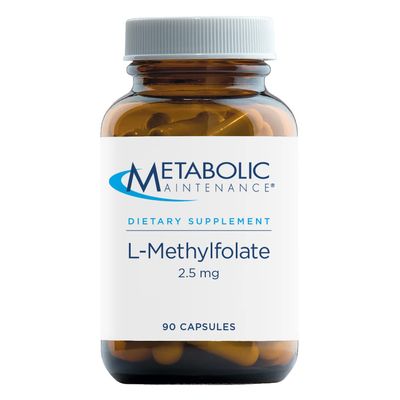
Metabolic Maintenance L-Methylfolate 2.5mg - Gluten-Free & Dairy-Free Folate Supplement - Supports Cognitive + Brain Health - L Methylfolate for Daily Use (90 Capsules)
Metabolic Maintenance L-Methylfolate 2.5mg - Gluten-Free & Dairy-Free Folate Supplement - Supports Cognitive + Brain Health - L Methylfolate for Daily Use (90 Capsules)
AED 263
Subscribe & Save 2%
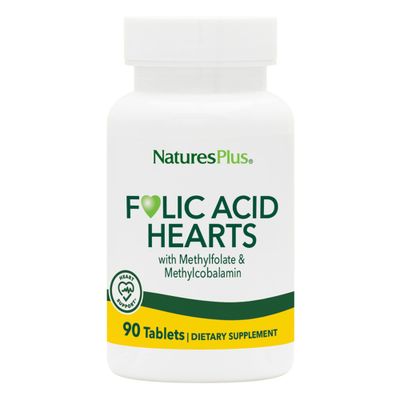
Natures Plus Folic Acid Hearts (Methylfolate) - 400 mcg, 90 Vegetarian Tablets - with Vitamin B6 & Vitamin B12 (as Methylcobalamin) - Gluten-Free - 90 Servings
Natures Plus Folic Acid Hearts (Methylfolate) - 400 mcg, 90 Vegetarian Tablets - with Vitamin B6 & Vitamin B12 (as Methylcobalamin) - Gluten-Free - 90 Servings
AED 91
Subscribe & Save 6%

Organic Folic Acid Supplement 1000 mcg - Vitamin B9 (Folate) from Organic Lemon Peel - 60-Day Supply - Plant-Based, Gluten-Free, Vegan, Non-GMO - 60 capsules - Premium Dietary Supplement
Organic Folic Acid Supplement 1000 mcg - Vitamin B9 (Folate) from Organic Lemon Peel - 60-Day Supply - Plant-Based, Gluten-Free, Vegan, Non-GMO - 60 capsules - Premium Dietary Supplement
AED 154
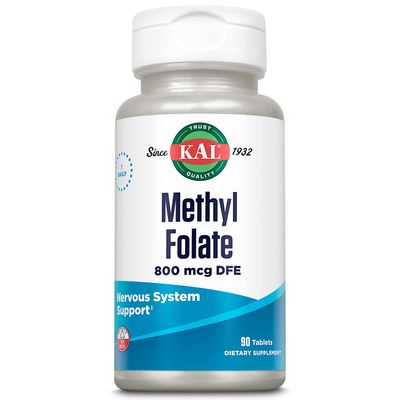
KAL Methyl Folate 800 mcg DFE, 5-MTHF Active Form Vitamin B9, Folic Acid Supplement, Heart Health, Prenatal, Mood and Brain Support, Fast Dissolving ActivTab, 60-Day Guarantee, 90 Servings, 90 Tablets
KAL Methyl Folate 800 mcg DFE, 5-MTHF Active Form Vitamin B9, Folic Acid Supplement, Heart Health, Prenatal, Mood and Brain Support, Fast Dissolving ActivTab, 60-Day Guarantee, 90 Servings, 90 Tablets
AED 129
Subscribe & Save 7%

VITAGENIX L-Methylfolate - Optimized & Highly Bioactive Methyl Folate Supplement for Mood & Immune Support - Professional Strength Active 5-MTHF Form - 1mg - 90 Capsules
VITAGENIX L-Methylfolate - Optimized & Highly Bioactive Methyl Folate Supplement for Mood & Immune Support - Professional Strength Active 5-MTHF Form - 1mg - 90 Capsules
AED 149
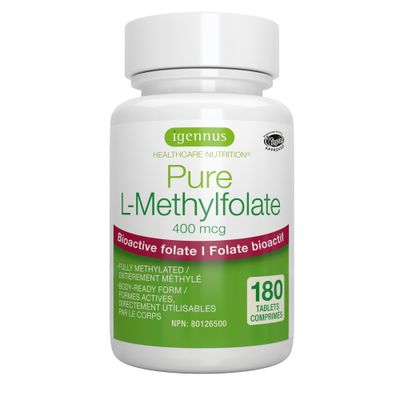
Pure Folate 400mcg, Optimized Methylfolate 667 mcg DFE, MTHFR Supplement, Clean Label, 180 Small Tablets, Lab Verified, Vegan & Hypoallergenic, by Igennus
Pure Folate 400mcg, Optimized Methylfolate 667 mcg DFE, MTHFR Supplement, Clean Label, 180 Small Tablets, Lab Verified, Vegan & Hypoallergenic, by Igennus
AED 111
Display prices in:AED
